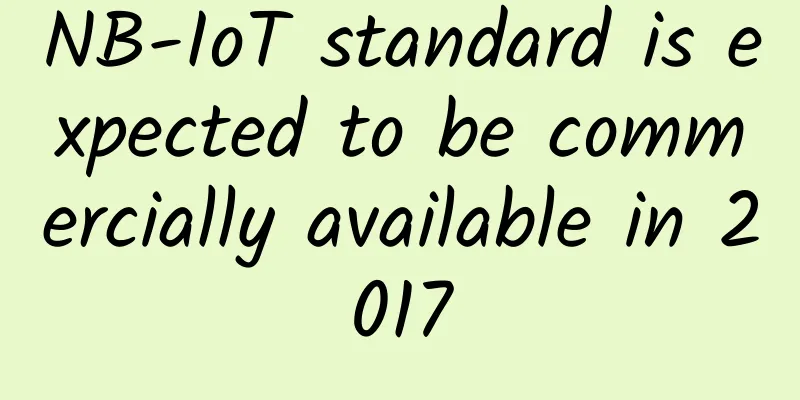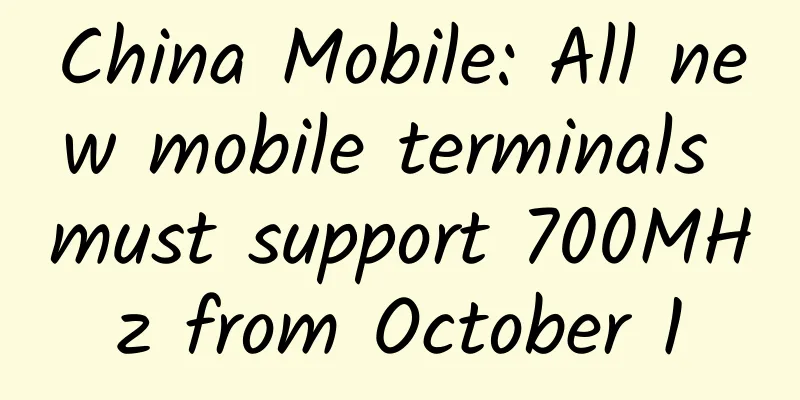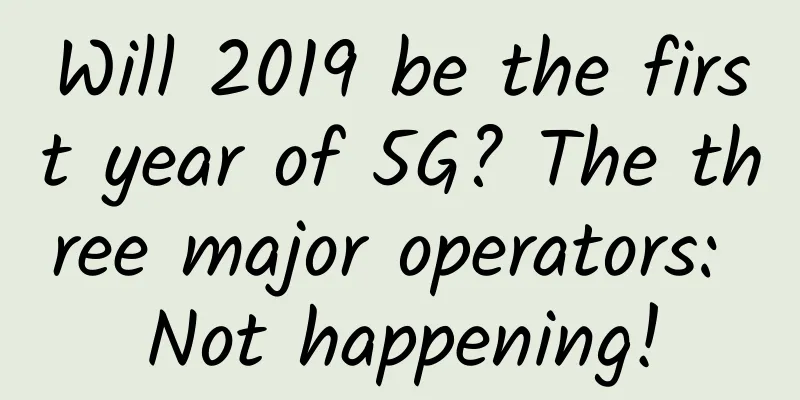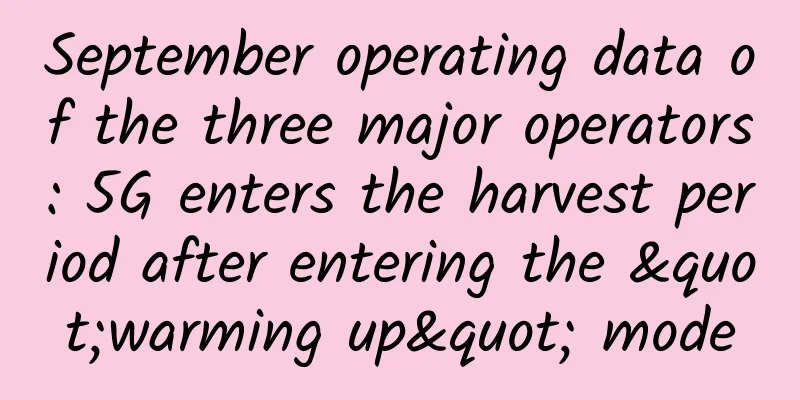NB-IoT standard is expected to be commercially available in 2017

|
June 16, 2016 was the most important day for the cellular Internet of Things industry. The 72nd 3GPP RAN Plenary Meeting held in Busan, South Korea, was successfully concluded. NB-IoT (Narrow Band Internet of Things) is an important topic of 3GPP R13, and its corresponding 3GPP protocol content was approved by the RAN Plenary Meeting, officially announcing that the core protocol of the NB-IoT standard, which is widely supported by the wireless industry, has finally been completed after more than two years of research. Global operators finally have a standardized IoT proprietary protocol. Products and solutions based on this protocol standard will be able to serve the IoT market of a wide range of industries. The successful completion of the standardization work also marks that NB-IoT is about to enter the large-scale commercial stage. NB-IoT Standard Origin The Internet of Things can be applied to all aspects of production and life, and its services have different requirements for network transmission speed. High-speed services mainly use 3G and 4G technologies, such as surveillance cameras, etc.; medium-speed services mainly use GPRS technology, such as POS machines, etc. There is currently no good cellular technology to meet the needs of low-speed services, and in many cases, GPRS technology can only be used to support them. With the development of the Internet of Things, low-speed services have gradually become the main market development direction of cellular Internet of Things in the future. The industry summarizes this market as the LPWAN (Low Power Wide Area Network) market, that is, low-power wide area network. Due to the problems of high terminal power consumption and insufficient coverage capability of GPRS technology, it cannot meet the needs of the LPWAN market. Therefore, operators hope to have a new cellular Internet of Things technology to meet the needs of the LPWAN market. Based on the keen insight into the trend and demand of cellular IoT, Huawei conducted extensive and in-depth demand and technology discussions with industry operators, equipment manufacturers, and chip manufacturers in early 2013, and quickly reached a consensus on promoting the development of the narrowband cellular IoT industry, and NB-IoT research officially began. At that time, everyone named this narrowband cellular IoT LTE-M, which stands for LTE for Machine to Machine. The name implies the expectation of creating a revolutionary new air interface technology based on LTE, which can achieve low cost and low power consumption of terminals and can be deployed together with LTE networks. LTE-M defines the key goals of narrowband cellular IoT: coverage needs to reach 99.9%, the link budget must be at least 20dB higher than GSM; the lower the terminal power consumption, the better; and the terminal module cost is expected to be less than US$5. Aiming at this demand, Huawei, as the only Chinese equipment manufacturer, proposed the narrowband design concept and theoretically proved that uplink narrowband can bring more than an order of magnitude capacity improvement in coverage-restricted areas, laying a solid foundation for the subsequent development of NB-IoT. Its classic formula for increasing capacity through narrowband has also been widely adopted. In addition, Huawei also pioneered the concept of uplink 3.75kHz LTE and systematically elaborated the design concept of the 180kHz narrowband system and the potential benefits it brings. This includes the ability to be co-deployed with GSM, UMTS, and LTE. For example, in the GSM Refarming scenario, as long as a GSM carrier 200kHz resource is available, this 180kHz narrowband system can be deployed. In addition, the 180kHz narrowband system can also be deployed in the LTE protection band. These design ideas have become the basis of the NB-IoT standard. NB-IoT Standard Development Process For a technology to become a 3GPP standard, it must first be established as a SI (Study Item), and after research and analysis, a TR (Technical Report) will be generated. After review by the 3GPP organization, it can be converted into a WI (Work Item), and then each work project group will output a TS (Technical Specification). Because it requires huge research resources, the entire process is generally led by one or several industry leaders. In terms of organizational form, the companies that contribute the most will serve as reporters. The four reporters for NB-IoT are Vodafone, Huawei, Ericsson, and Qualcomm. From LTE-M to CIoT There were two main approaches to the selection of LTE-M technical solutions: one was based on the existing GSM evolution approach; the other was the new air interface approach proposed by Huawei, which was called NB-M2M at the time. In May 2014, the SI "Cellular System Support for Ultra Low Complexity and Low Throughput Internet of Things" supported by Vodafone, China Mobile, Orange, Telecom Italy, Huawei, Nokia and other companies was established in the 3GPP GERAN working group. Both ideas were included, and the name of LTE-M evolved into Cellular IoT, or CIoT for short. Since most operators are more concerned about the new air interface solution, NB-M2M has become a hot topic among operators for quite a long time. From NB-M2M to NB-CIoT As the work progresses, CIoT, which is being standardized in GERAN, has attracted more and more attention from operators and manufacturers, and the deserted GERAN has gradually become lively again. Some operators, equipment manufacturers, and chip manufacturers who had not participated in GERAN meetings have returned to GERAN and paid attention to CIoT topics. An important decision was made at the PCG (Project Coordination Group) meeting at the end of April 2015: After SI is completed in GERAN, CIoT will be moved to RAN for project establishment and completion of relevant protocols in the WI phase. This shows that the CIoT topic has received widespread attention from global operators, so PCG decided to move the CIoT sapling from GERAN to RAN for further cultivation. There are many companies involved in RAN. In order to achieve standard progress as soon as possible, integration and collaboration are the most effective ways, which is also the only way to jointly promote an industry. In May 2015, Huawei and Qualcomm jointly announced a converged solution based on consensus, that is, FDMA multiple access for uplink and OFDM multiple access for downlink. The name of the converged solution is NB-CIoT (Narrow Band Cellular IoT). From NB-CIoT to NB-IoT As the market becomes clearer, the standards and industry of cellular IoT are accelerating. The integration of Huawei and Qualcomm's technical solutions has further shocked the industry. No one wants to be left behind in the cellular IoT market, which has huge potential in the future. After Huawei and Qualcomm announced the integration of their technical solutions, more companies have joined in and tracked the progress of the NB-CIoT SI standard. At the same time, driven by market demand, other manufacturers also accelerated their research and development in the narrowband field. After a period of preparation, Ericsson, together with several companies, proposed the concept of NB-LTE (Narrow Band LTE) at the first meeting of the GERAN SI phase, the GERAN meeting on August 10, 2015. At the RAN#69 meeting in September 2015, after intense discussions, all parties finally reached a consensus that the two technical solutions of NB-CIoT and NB-LTE were integrated to form NB-IoT WID. NB-CIoT evolved to NB-IoT (Narrow Band IoT). NB-IoT Standard Development History NB-IoT core protocol frozen, performance specifications completed in September As of June 16, the NB-IoT R core protocol has been frozen in the four working groups of RAN1, RAN2, RAN3, and RAN4. The performance specification is in the 3GPP RAN4 working group and is scheduled to be completed in September. The performance specification of NB-IoT and eMTC is being carried out simultaneously and is scheduled to be completed at the same time. NB-IoT has received great attention from the industry. All 3GPP companies have contributed a large number of proposals. Starting from the SI of GERAN, all companies have contributed a total of 3,205 technical proposals, and a total of 447 proposals have been approved, which can be said to be fruitful. Among them, Huawei contributed 1,008 proposals, 184 of which were approved, accounting for 41% of the 447 approved proposals. Huawei contributed the most standard proposals, ranking first, demonstrating its strong leadership in standards and concepts. Huawei and four leading European and American companies jointly contributed about 98% of the approved proposals. Statistics on the number of proposals passed in 3GPP R13 NB-IoT standards Statistics on the number of 3GPP R13 NB-IoT standard proposals As the main promoter of the NB-IoT standard, Huawei has made a lot of contributions at every stage: Study Item Phase Huawei has done a lot of research work since the earliest NB-M2M project was established in GERAN SI in May 2014. At the first SI meeting, Huawei submitted a discussion draft of the NB-M2M technology concept supporting the SI, and quickly improved the NB-M2M technology solution at the subsequent GERAN meeting, which effectively promoted the progress of GERAN SI. Work Item Phase The Work Item was carried out in RAN, and Huawei served as the second rapporteur of the NB-IoT project, responsible for organizing offline discussions, summarizing a large amount of evaluation work, and being the overall person in charge of the project progress. Since NB-IoT involves the new development of the entire air interface, the workload is huge, so the project has four rapporteurs, namely Vodafone, Huawei, Ericsson, and Qualcomm. In addition to being the speaker, Huawei also undertook a lot of technical and organizational work. Especially after October 2015, NB-CIoT and NB-LTE were integrated. There were nearly 200 technical proposals at each meeting. A lot of technical solution research and demonstration, performance evaluation of technical solutions, comprehensive analysis of the pros and cons of the technology, and then selection and integration were required. It requires not only deep technical capabilities, but also the ability to take a bird's-eye view of the overall situation, and the ability to coordinate the various organizations and companies in unison. Huawei has taken on this responsibility very well, and was responsible for the final compilation and output of the authoritative evaluation summary version, forming the R1-157741 proposal, which was unanimously approved by RAN1. From December 2015 to April 2016, the NB-IoT protocol formulation entered a critical sprint stage. After collective consultation, the four rapporteurs of NB-IoT, Vodafone, Huawei, Ericsson, and Qualcomm, decided to conduct extensive discussions to accelerate the progress of NB-IoT standardization. In mid-December 2015, the four rapporteurs established a discussion group with more than 40 companies and a total of more than 150 members, and established 11 discussion topics, including synchronization, random access, broadcast, etc. Among them, Huawei was the organizer of three topics, including synchronization, downlink reference signal, and downlink multiplexing mode, and the other eight topics were undertaken by seven companies, including Ericsson and Qualcomm. Huawei not only submitted a large number of technical suggestions in the topics it undertook, but also actively participated in the discussion of topics organized by other companies, contributing to the progress of 3GPP. Chairing meetings and drafting agreements Another key task of 3GPP standardization is protocol writing. As the overall author of LTE protocol 36.212, Huawei completed the writing of NB-IoT protocols in 36.212 with high quality. In addition, Huawei also undertook the writing of NB-IoT-related protocols 36.300, 36.302, and 36.331, making positive contributions to the progress of 3GPP NB-IoT standards. Usually, 3GPP meetings are chaired by the chairmen of each working group. In case of time conflicts, they can be chaired by recognized authoritative experts in the field. This happened at the 3GPP RAN1 84BIS meeting held in Busan, South Korea, where Brian, a senior standards expert at Huawei, chaired the NB-IoT section. NB-IoT Standard in China Many industry analysis agencies believe that China will become the world's largest IoT market. In line with the pace of 3GPP standardization, China has also started to formulate NB-IoT related standards. At the 74th meeting of CCSA TC5 WG9# in November 2015, the project of "General Technical Requirements for Cellular Narrowband Wireless Access for the Internet of Things" was approved, marking the official launch of domestic NB-IoT standardization. At the 77th meeting of CCSA TC5 WG9# in early June 2016, the project of NB-IoT series industry standards (including core network, access network and terminal) was approved. The NB-IoT series industry standards are scheduled to be released at the end of 2016. This means that in China, NB-IoT has the basic conditions for large-scale commercial use in early 2017, and 2017 is expected to be the first year for large-scale commercial use of NB-IoT in China. The meeting also approved the eMTC industry standard, which is half a year later than the NB-IoT industry standard. It is expected to start discussion in early 2017 and be released in June 2017. Huawei helps NB-IoT take off with practical applications In November 2015, Huawei, together with 21 industry giants including mainstream operators, equipment manufacturers, chip manufacturers and relevant international organizations, officially announced the establishment of the GSMA NB-IoT Forum industry alliance at the NB-IoT Forum preparatory meeting held during Huawei's Hong Kong MBB Forum, aiming to accelerate the development of the narrowband Internet of Things ecosystem. Six of the operator members also announced that they would jointly establish six NB-IoT open laboratories around the world with Huawei, focusing on narrowband Internet of Things business innovation, industry development, interoperability testing and product compatibility verification. Huawei has started to conduct business application testing based on pre-standard solutions with partners around the world to meet customer needs, stimulate industry innovation, and improve and enhance technical solutions: During the Mobile World Congress in February 2015, Huawei and Vodafone demonstrated an end-to-end service demonstration of water meter applications including chips. In June 2015, Huawei and Shanghai Unicom launched end-to-end field testing of smart parking applications. In November 2015, Huawei and Deutsche Telekom completed an end-to-end field test based on smart parking in Germany. In December 2015, Huawei, together with Vodafone and a local water company in Spain, completed end-to-end testing of water applications on Vodafone's Spanish commercial network. In April 2016, Huawei and Etisalat completed the business application testing of smart parking applications. In April 2016, Huawei, together with South East Water of Australia and local operators VHA and Optus, launched the water network informationization reform. In May 2016, Huawei, China Telecom and Shenzhen Water Group signed a strategic cooperation agreement to build smart water services. I believe that as the standard is frozen, more industry partners will join the NB-IoT camp. NB-IoT will also build the world's largest cellular IoT ecosystem. More commercial applications will emerge in the second half of 2016, and explosive growth will occur in the future. As predicted by many analysis agencies, the number of cellular IoT connections will grow rapidly from 400 million connections in 2015 to 3 billion connections in 2020. This huge blue ocean market has been opened. |
<<: The past and present of AlphaGo
>>: Review of the top ten events in the Internet industry in 2016
Recommend
5G network is accelerating! More than 500,000 5G base stations have been built and put into operation across the country
Since the 13th Five-Year Plan, my country has vig...
iOVZ VPS 20% off monthly payment, 30% off annual payment, Korean (SK)/US (Coresite) data center
iOVZ Cloud has launched a regular promotion for M...
Three things you need to know before embarking on the journey of becoming a data scientist
【51CTO.com Quick Translation】 Currently, the indu...
Satellite Internet or 5G, which is cheaper?
Just as a manned spacecraft was sent into space, ...
What are the unique values of enterprise-level Wi-Fi Mesh networks?
Wi-Fi introduced mesh technology very early, and ...
HostKvm: 20% off lightweight KVM in Hong Kong/Los Angeles, 1G memory package starting at $5.2 per month
HostKvm continues its 20% discount promotion this...
TMThosting: Seattle high-security VPS with 20% off for monthly payment, 30% off for annual payment, China Unicom CUVIP line, Alipay support
It has been a while since I shared information ab...
1.2 trillion investment! After reaching the summit of Mount Everest, how will 5G be implemented?
Recently, China's three major operators have ...
5G has been promoted for three years, why do some people still insist on using 4G? It turns out that I thought too simply
In recent years, there have been more and more vo...
The report said that the number of Internet users in my country has reached 940 million and the Internet penetration rate is 67%.
The China Internet Network Information Center (CN...
Want to know about 5G synaesthesia integration? Just read this article
Development Background Synaesthesia integration: ...
The number of 4G users of the three major operators is nearly 1.3 billion, and the total number of fixed-line broadband users is 476 million.
Data released by the Ministry of Industry and Inf...
ProfitServer has opened 4 new data centers in Hong Kong, starting from $5.77 per month for 100M unlimited traffic
ProfitServer sent a new email a few days ago, say...
How to accelerate the scale application of 5G? Integration of thousands of industries is the key
Although 5G will enter a new stage of large-scale...
Is your home router safe? Tests on 18 routers tell you...
Fearing Wi-Fi radiation, parents asked schools to...


![[Black Friday] HawkHost: Cloud Web Hosting/Semi-Dedicated 70% off, Hong Kong/Los Angeles and other data centers](/upload/images/67cabcd62eb44.webp)


![[6.18]spinservers: $89/month-2*E5-2630Lv3/64GB/1.6TB NVMe/10Gbps bandwidth/Silicon Valley data center](/upload/images/67cabe68b64e4.webp)



